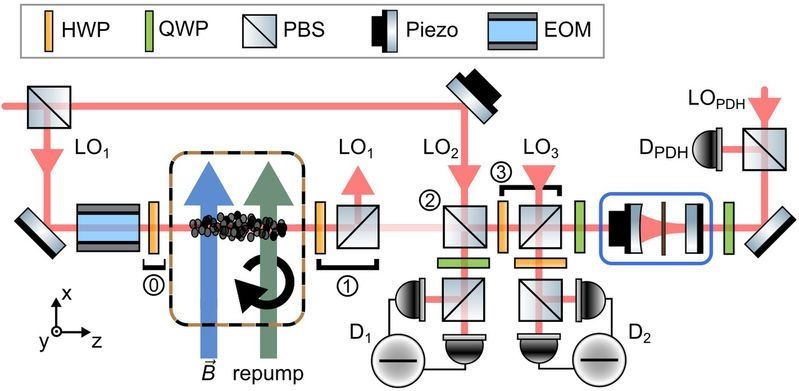Interesting…
Quantum mechanics dictates that a continuous measurement of the position of an object imposes a random quantum back-action (QBA) perturbation on its momentum. This randomness translates with time into position uncertainty, thus leading to the well known uncertainty on the measurement of motion1, 2. As a consequence of this randomness, and in accordance with the Heisenberg uncertainty principle, the QBA3, 4 puts a limitation—the so-called standard quantum limit—on the precision of sensing of position, velocity and acceleration. Here we show that QBA on a macroscopic mechanical oscillator can be evaded if the measurement of motion is conducted in the reference frame of an atomic spin oscillator6, 7. The collective quantum measurement on this hybrid system of two distant and disparate oscillators is performed with light. The mechanical oscillator is a vibrational ‘drum’ mode of a millimetre-sized dielectric membrane, and the spin oscillator is an atomic ensemble in a magnetic field9, 10. The spin oriented along the field corresponds to an energetically inverted spin population and realizes a negative-effective-mass oscillator, while the opposite orientation corresponds to an oscillator with positive effective mass. The QBA is suppressed by −1.8 decibels in the negative-mass setting and enhanced by 2.4 decibels in the positive-mass case. This hybrid quantum system paves the way to entanglement generation and distant quantum communication between mechanical and spin systems and to sensing of force, motion and gravity beyond the standard quantum limit.
